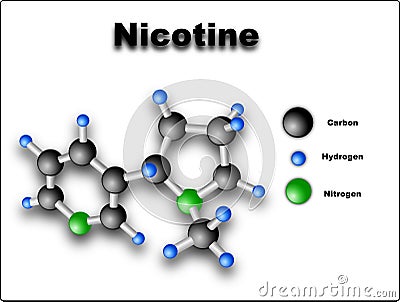Casciaro Roberta e Composto Valeria
Introduction
Although tobacco smoking is a widely recognized health hazard and a major cause of preventable mortality, consumption of tobacco remains a common practice in human societies. The association between smoking and various cancers, particularly lung disease, is well-known, but the effect of cigarette smoking on reproduction is still unclear.
Several epidemiological studies have shown a strong association between cigarette smoking and impaired ovarian function. In fact, smoking women may experience increased rates of pregnancy loss and earlier age at menopause. Although the link between cigarette smoking and complications of pregnancy has been largely proved, very little is known about the effect of smoking on infertility. Cigarette smoking is associated with a reduced monthly probability of conception in natural cycles and with a reduced chance for pregnancy in assisted reproduction cycles.
Because of this it was investigated the effect of nicotine and its methylated metabolite, N-methyl-nicotine (M-nicotine), on human luteal cells by measuring release of progesterone and prostaglandins (PGs) from cultured cells and by testing gene expression of vascular endothelial growth factor (VEGF), an angiogenic factor strictly involved in luteal pathophysiology.
Cigarette tobacco contains several substances: carbohydrates and proteins are the most representative components, but alkaloids are significantly present as well. Nicotine, in particular, represents 90%–95% of total alkaloids.
Nicotine is a highly toxic substance and is absorbed quickly through the respiratory tract, mouth mucosa, and skin. Approximately 80%–90% of nicotine is metabolized by the liver, but the kidneys and lungs are involved as well.

Discussion
In a study of 2004, it was investigated if nicotine and its methylated metabolite, N-methyl-nicotine (M-nicotine), could affect progesterone production by human luteal cells.
Because the cyclooxygenase pathway is strictly involved in the regulation of luteal steroidogenesis, it was also looked for a possible influence of nicotine on the release of prostaglandins (PG). Finally, it was tested the effect of nicotine and its metabolite on gene expression of vascular endothelial growth factor (VEGF), an angiogenic factor whose expression is directly correlated with a normal luteal function.
It was first investigated the effect of different doses of nicotine and M-nicotine (10-6 to 10-11 M) on progesterone release by human luteal cells cultured for 24 h. Both substances significantly reduced progesterone production compared to control. Nicotine was able to significantly reduce progesterone production at all tested concentrations in a dose-dependent manner (fig.2).

A similar effect was seen when cells were treated with M-nicotine: the progesterone production was significantly reduced by this metabolite at all tested concentrations in a dose-dependent manner. The negative effect exerted by both substances was in the same power range. However, neither nicotine nor M-nicotine at any tested concentration was able to affect the stimulatory effect of hCG (25 ng/ml) on luteal steroidogenesis.
The next step was to evaluate the effect of nicotine and its metabolite (10-6 to 10-11 M) on production of PGs. All tested doses of both substances were able to increase significantly PGF2a release by the cells; in particular, a steady-state level was reached with the lowest nicotine concentration (10-11 M), because no significant variation in PGF2a medium content was observed in the presence of higher nicotine doses. However, the effect of M-nicotine on the PG release was dose-related, and its stimulatory effect was slightly more potent than that of nicotine.
On the other hand, both alkaloids were able to decrease PGE2 release by luteal cells, following a trend similar to that previously described for PGF2a increase. In fact, nicotine significantly inhibited PGE2 release at all tested doses without a dose-dependent trend, whereas M-nicotine significantly inhibited PGE2 release in a dose-dependent manner.
Finally, it was tested the possibility for both substances to affect VEGF expression in cultured human luteal cells. Nicotine was able to increase significantly the expression of VEGF in our cells (fig.6). Interestingly, this effect was similar to that exerted by hCG, a powerful inducer of VEGF mRNA expression in this cell type. However, M-nicotine did not exert any effect.

Interestingly, cotinine, a nicotine metabolite, was found in ovarian granulosa-luteal cells in a dose-dependent relationship with its follicular fluid levels. Binding of this alkaloid to nuclear and cytoplasmatic proteins could affect the developmental potential of maturing follicles and lead to perturbation in meiotic maturation of oocytes.
Conclusion
In conclusion, it was demonstrated the ability of nicotine and M-nicotine to affect production of progesterone and PGs as well as expression of VEGF in human isolated luteal cells. Based on these results, we can speculate that nicotine and M-nicotine could influence CL physiology by modulating both its steroidogenic activity (probably through the PG system) and its vascularization. Furthermore, we can speculate that a CL deficiency may be one of several mechanisms through which nicotine can cause infertility and early pregnancy loss.
PATIENT’S FACT SHEET: Smoking and Infertility
Female Infertility and Smoking
Effects of Nicotine on Human Luteal Cells In Vitro: A Possible Role on Reproductive Outcome for Smoking Women, 2004